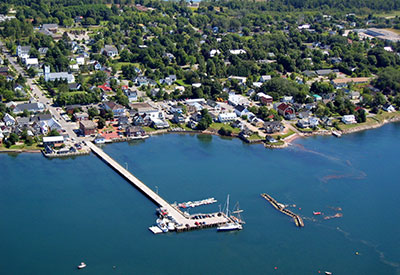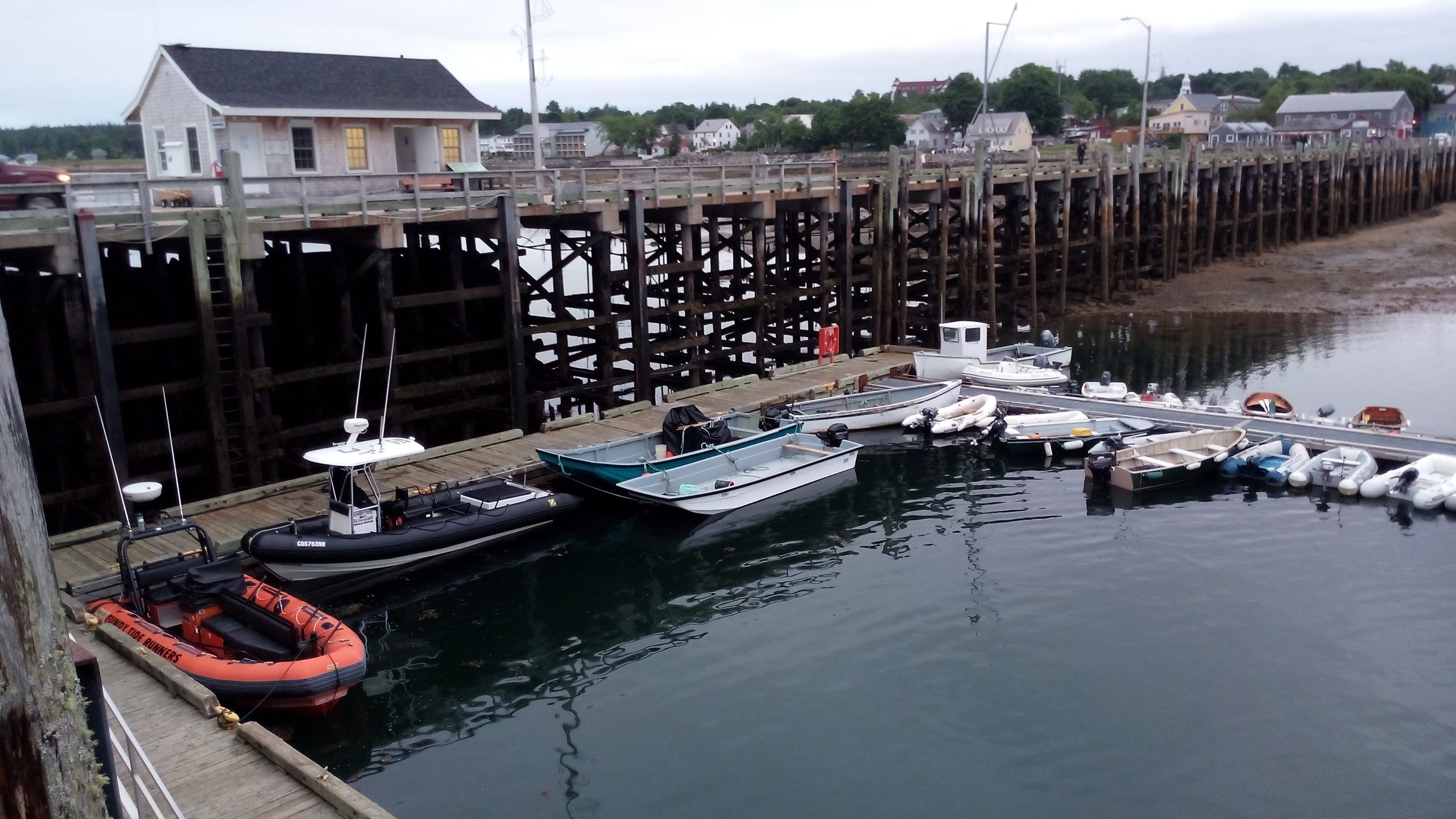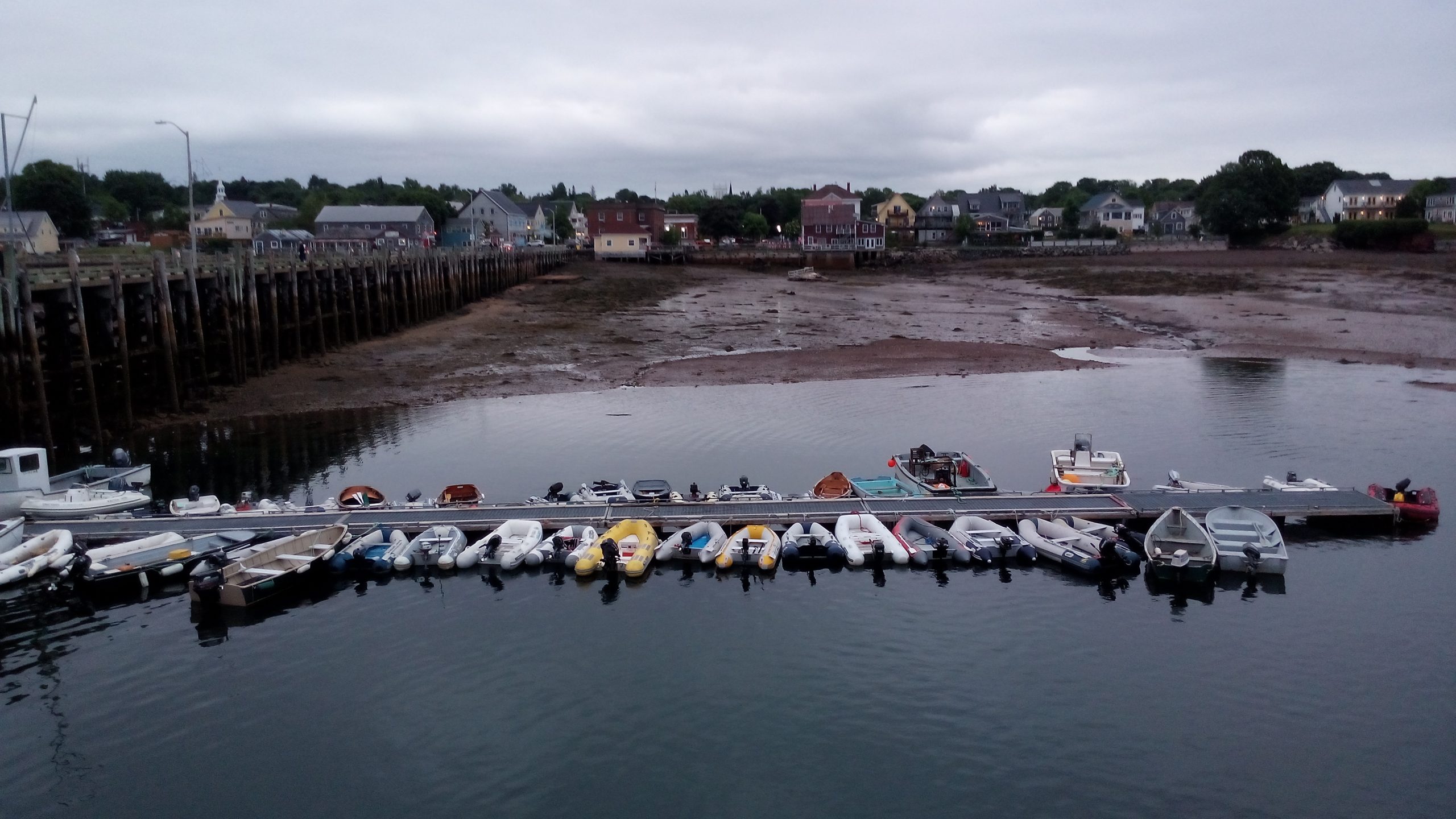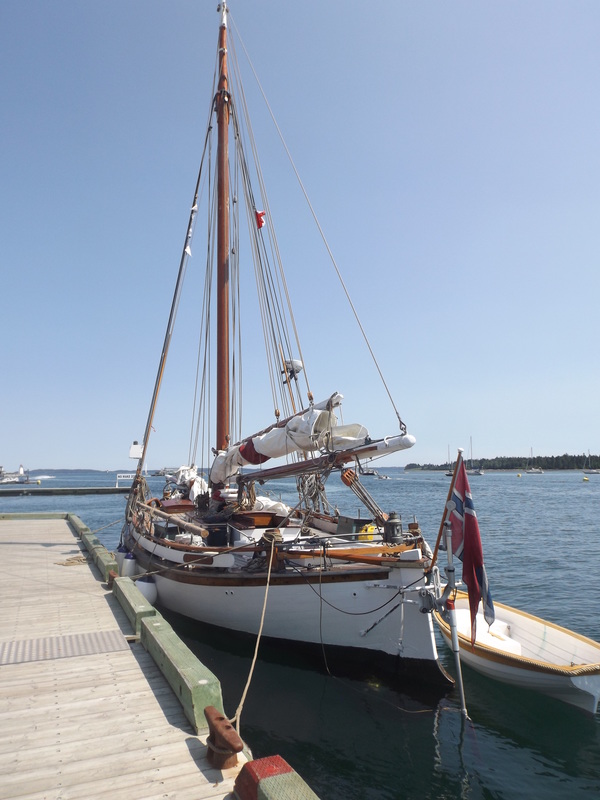Destination Saint Andrews

Sept 21, 2016
Tucked away behind Navy Island within Passamaquoddy Bay, St. Andrews harbour is sheltered from both rough seas and fog by Deer Island. It was these features that made it attractive to the British as a stronghold for the region. Today it is a popular cruising destination boats form the US and Canada.
There are two ways to enter Passamaquoddy Bay: L’Etite Passage or Head Harbour/Western Passages. With the powerful currents generated by a 24 foot tidal range it is important to work with the tides. Done right it is a thrill to see 13 or 14 knots SOG in a sailboat.
In L’Etite Passage the currents can run up to 5 knots, so take this at slack high or low water or still better, ride with a fair tide. There can be quite a bit of turbulence, but it makes for a fast passage. There are two ferries running between Deer Island and L’Etite every half hour. They monitor VHF channel 14 and use the Automatic Tracking System (AIS) signal.
The Head Harbour Passage / Western Passage where the tides run at 2-3 knots, is easier but also slightly longer (for boats coming from the east). This route takes you inside of Campobello Island, past Eastport, Maine, and around the western end of Deer Island.
Head Harbour on Campobello Island is a scenic stop if waiting for a favourable tide into the bay. The whale watching boats monitor channel 78 if you want to check out whale activity in the area.
St. Andrews Market Wharf is operated by the town of St. Andrews and welcomes visiting boaters. Whale watching tour operators and fishing boats also use the wharf, making for a bustling scene. Moorings are available for rent and limited dockside space can be reserved ahead. Contact Wharfinger Steve Seeley by phone at 506-529-5170 or on VHF channel 78 (also monitoring channel 16). Off season he can be reached by email: wharf@townofstandrews.ca
Moorings cost $40 first night, $20 second night and third night is free. So staying three days for $20 is a bargain and there is plenty to keep you busy in town. Moorings fee includes shower and pump-out. Space alongside is very limited and costs $2 per foot. There is no fuel available at the wharf, but there is a gas station 8 blocks away and a wagon to haul jerry cans (which are available if needed). The nearest fuel dock is in Eastport, Maine.

At low water the moorings have depths of at least 14ft while the front of the wharf varies from 9 to 13 feet. Remember, with a 24 foot tidal range you need plenty of scope when anchoring, making picking up a mooring even more attractive. There is a long dinghy dock to handle tenders for all the moored boats.
Steve Seeley tells us he tries to meet arriving yachts and direct them to available rental moorings which are marked with distinct blue mooring balls. If you arrive late just pick up a blue mooring and check with the wharfinger in the morning. Moorings farther away from the wharf are quieter as things can get busy during the day with whale watching boats and other traffic. Most of the moorings in the harbour are privately owned and you will find local boaters happy to welcome visitors and answer aby questions.
The wharf is located in the heart of a tourist area with shopping and a wide range of restaurants, all within easy walking distance. A bank, hardware store (old style), drug store, laundromat and grocery store are all within a block and the liquor store is just a few blocks away.
Wharfinger Steve Seeley tells us this has been the busiest summer he can remember. The number of visiting yachts is up, including 22 yachts from the Cruising Club of America (CCA), and the whale watching tours have been booked solid. He says the number of whale sightings is also way up. With the continued improvements for visitors it looks like 2017 could be a banner year for the harbour.
Most of this information is from the Town of St. Andrews. For more details Google St. Andrews Wharf.


Wharfinger hut: credit – Town of St. Andrews
St. Andrews Market Square: credit – Town of St. Andrews
Busy dinghy dock: credit – S. Cairns
Norwegian visitor: S. Seeley




























